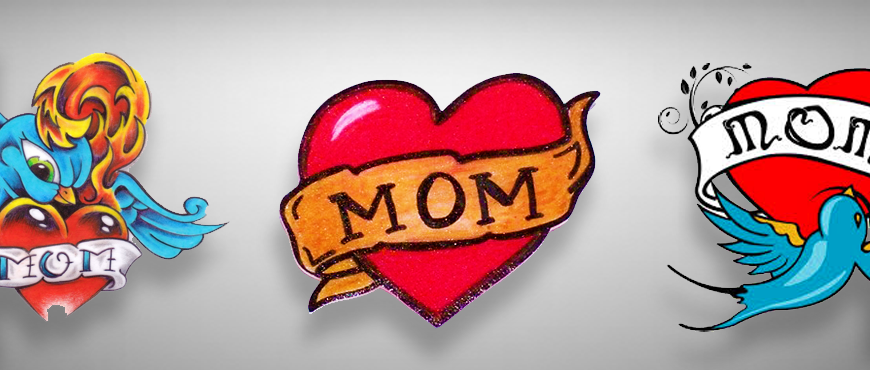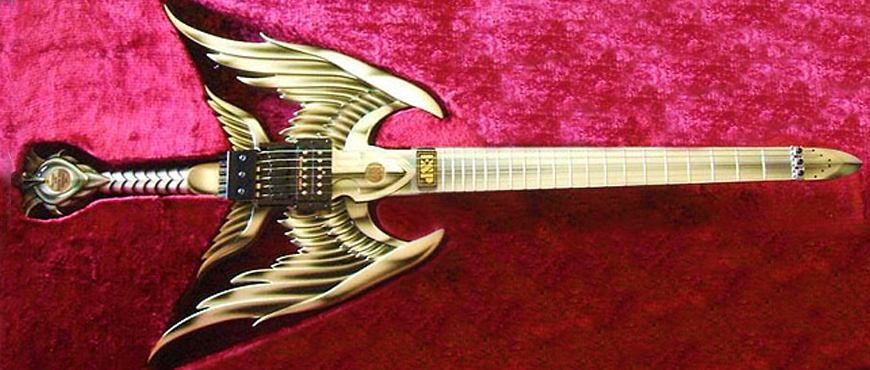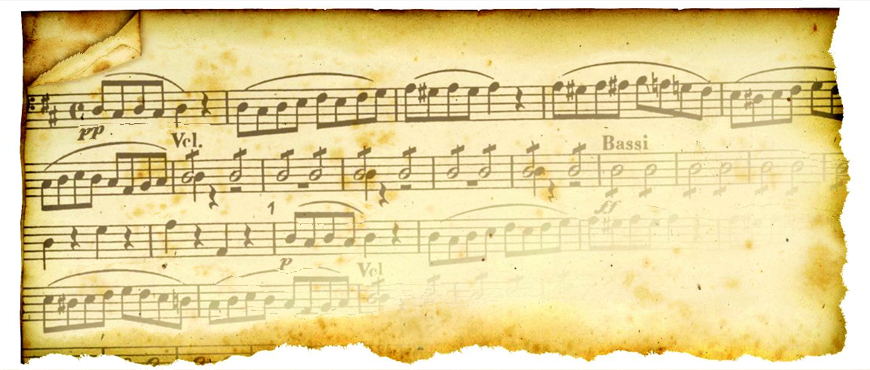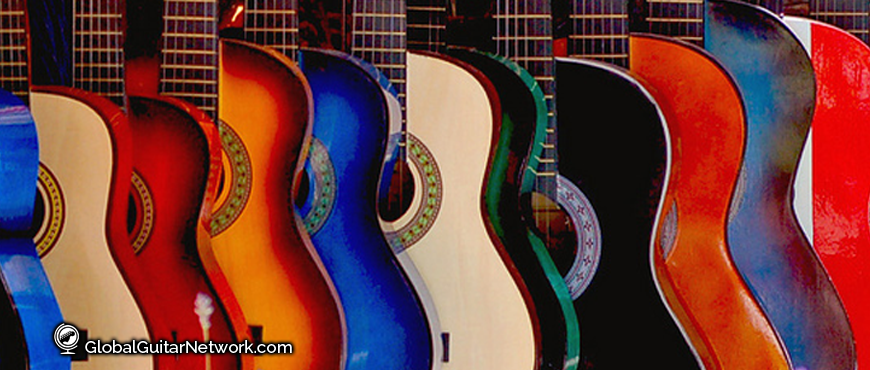
The Most Common Chord Progressions
May 29, 2014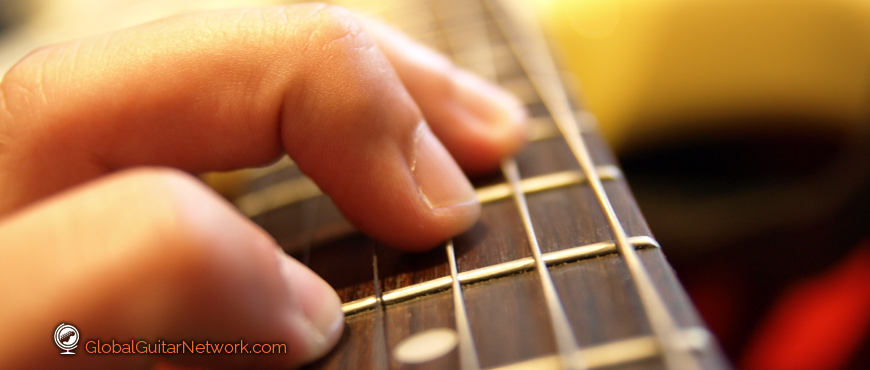
20 Chords Every Guitarist Should Know
May 29, 2014Chord Progressions in a Major Key
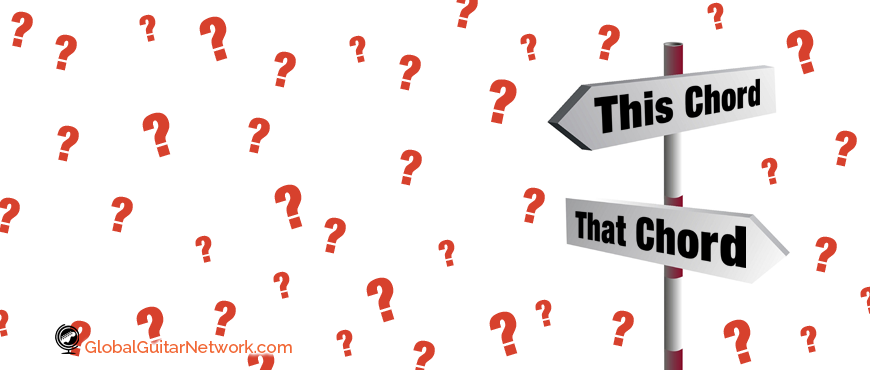
It can get a little confusing trying to remember which chord typically follows another when writing diatonicly in a major key so I use the diagram below to help me.
Notice how it starts on the one chord which can then lead to any other chord from the key.
From there it’s just a matter of finding your way back to the one chord using the many possible routes.
The Major Key Progression Cheat Sheet
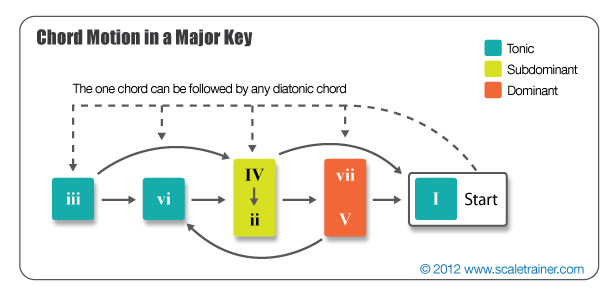
Now You Try
Let’s go ahead and give it a try. Use these diatonic chords from the key of C major to write a few chord progressions.
If you come up with something you like why not YouTube it and drop the link in the comments below. I’d love to check it out.


